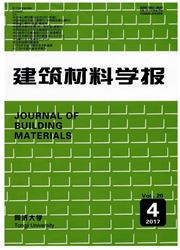

 中文摘要:
中文摘要:
采用有机元素分析仪、快速氯离子测定法(RCT)、电化学阻抗谱法(EIS)和弱极化法,研究6种胺类有机物在混凝土中的电迁移能力、氯离子的排除情况及通电前后钢筋锈蚀的变化情况.结果表明:相同条件下,不同的胺类阻锈剂在混凝土中的电迁移能力和存留能力不同,且胺类阻锈剂种类对氯离子的排除影响不大;双向电渗技术的除氯效果比电化学的除氯效果弱,但双向电渗后钢筋附近混凝土孔隙液中阻锈剂的含量是氯离子含量(质量摩尔浓度)的2~7倍;双向电渗后混凝土保护层电阻增大,钢筋的锈蚀速度由通电前的电荷传递过程控制转变为氧气在混凝土中的渗透速度控制,钢筋的腐蚀电位显著提高,从而使钢筋的耐蚀性能得以提高.
 英文摘要:
英文摘要:
The permeability of six amine-based inhibitors,the effectiveness of chloride removal and the change of carbon steel in the chloride-contaminated reinforced concrete specimens were studied by organic elemental analyzer,rapid chloride test (RCT),electrochemical impedance spectroscopy (EIS) and weak polarization method.The results show that under the same condition,six amine based inhibitors have different permeability in concrete,but with different amine based inhibitors,the effectiveness of chloride removal shows slight difference.Compared with electrochemical chloride removal,the effectiveness of bidirectional electromigration rehabilitation is weaker.However,the content of amine based inhibitors in concrete pore solutions is twice that of the rest of chloride.Electrochemical impedance spectroscopy (EIS) and weak polarization tests indicate that after bidirectional electromigration rehabilitation,the resistance of the concrete cover and the corrosion potential of steel are improved.This means corrosion resistance of steel is improved.But the corrosion current and the corrosion rate of steel is increased.It is probably because alkaline corrosion occurs on rebar surface.
 同期刊论文项目
同期刊论文项目
 同项目期刊论文
同项目期刊论文
 期刊信息
期刊信息
